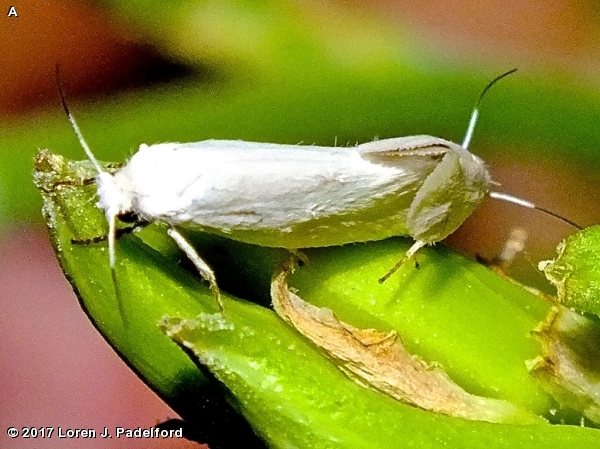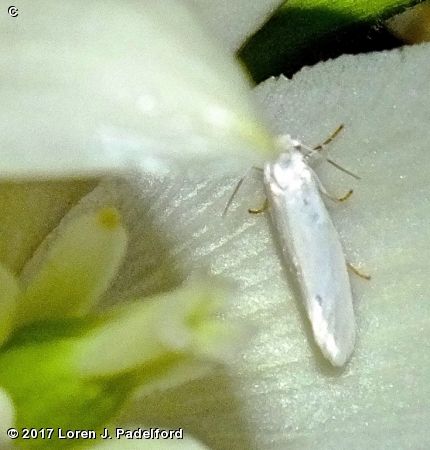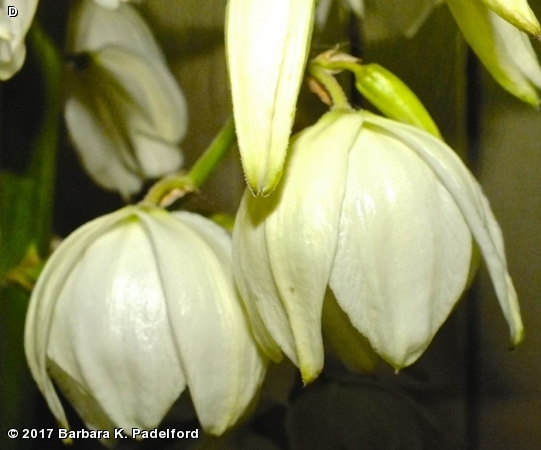
The Yucca Moth is 5/8 inch long. The forewing is white above and dark brown on the underside. The hindwing is grayish-brown with a white fringe. This is a small white moth that blends in well on the white flowers. The larva is pink and hairless.
This moth is only found in Yucca plants. The moths shown here were photographed on the Yucca flowers around the Nature Center at Neale Woods on June 12, 2017. The moths fly when the Yuccas are flowering. These moths are short-lived and do not feed.
Only the Yucca moth can pollinate the Yucca flowers, so this mutually beneficial relationship is vital for the survival of both plant and moth. At maturity, yucca pollen grains are sticky masses called pollinia. The female moth has a pair of special long, curved prehensile appendages in her mouth (maxillary palpi) to collect, form and carry a pollen ball. The female crawls into a flower and inserts her ovipositer into the ovary wall and deposits one egg into the ovule chamber. Next she draws the pollen mass back and forth over the stigma, insuring pollination of the flower. The larva hatches in late spring and summer and feeds on the maturing seeds. It only consumes a small percentage of the hundreds of seeds within the seed capsule. In late fall the larva drops to the ground, burrows into the soil and constructs a silken cocoon covered with sand grains in which it spends the winter. (“Wayne’s Word,” Volume 9, #2, summer 2000).
Disclaimer: The content of NatureSearch is provided by dedicated volunteer Naturalists of Fontenelle Forest who strive to provide the most accurate information available. Contributors of the images retain their copyrights. The point of contact for this page is: Babs Padelford.



